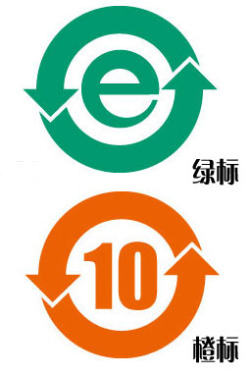 The origin of the product is an important manifestation of consumer protection. Countries such as the United States, Canada, and Japan have already provided regulations on the origin of imported textile products. The European Union (eu) no. 1007/2011 regulation formally implemented on May 8, 2012 clearly stated that the labels of textile products must be properly marked. In the country of origin, textiles that are produced in the European Union after at least two of several manufacturing processes of spinning, weaving, finishing, or sewing are considered to be textiles originating in EU countries; for example, products imported from third countries , should be mandatory with the original label.
The origin of the product is an important manifestation of consumer protection. Countries such as the United States, Canada, and Japan have already provided regulations on the origin of imported textile products. The European Union (eu) no. 1007/2011 regulation formally implemented on May 8, 2012 clearly stated that the labels of textile products must be properly marked. In the country of origin, textiles that are produced in the European Union after at least two of several manufacturing processes of spinning, weaving, finishing, or sewing are considered to be textiles originating in EU countries; for example, products imported from third countries , should be mandatory with the original label. The scale of China's textile and garment export enterprises varies, most of them are pure processing enterprises. The fact that the export profits are low makes most companies lack the manpower and energy to pay attention to changing regulatory requirements. The survey shows that industrial and trade enterprises have a relatively good degree of laws and regulations, and 39% of industrial and trade-oriented enterprises have contacted the regulations, compared with only 21% of pure processing enterprises. Companies generally stated that they lacked information sources. Among the related companies that had contacted the regulations, most companies stated that they received relevant information from inspection and quarantine authorities. 18% of companies stated that they obtained information through other means such as customers, and only 12% of companies actively obtained information through online media. Businesses generally pay insufficient attention to relevant laws and regulations, which makes them unable to cope with laws and regulations.
For this reason, the inspection and quarantine department reminds relevant exporting enterprises to actively take an active interest in the progress of the relevant laws and regulations concerning the country of origin of the importing country, organize the production in strict accordance with the regulations, ensure that the product label/identification information is accurate, and take the initiative to respond to similar issues such as labels when the contract is signed. To be clear, to ensure the smooth export of products.
Departments of foreign trade and economic cooperation should play the role of “incubators†for local companies, thoroughly study foreign policies and laws, truly know each other, protect the company’s international market, guide enterprises in establishing quality awareness, and communicate regulatory changes in the first place.
The inspection and quarantine departments shall classify and supervise and give priority guidance. For the statutory inspection commodities in the catalogue, the compliance inspection and inspection supervision of the origin identification of related products shall be intensified, and the enterprises shall be instructed to establish a product label inspection system. For the "provisional inspection and quarantine" and legal inspections of out-of-category commodities that have a lot of problems, companies should be required to provide product identification related information and strengthen auditing to strengthen supervision and spot checks.
Dyeing is a relatively complicated process. The process of dyeing different quality fabrics is different, such as cotton, polyester-cotton, nylon, polyester, chemical fiber products, blended products and so on. Some use padding, dyeing can be, and some must use high temperature and high pressure dyeing, some only dye once, and some have to be painted multiple times.
Although dyeing can be done through a rolling mill, it is also the most difficult process, because the color control of dyeing is not only known, but also many unknown things, such as the stability of dyes at different temperatures, steam Control, control of rolling car pressure, etc., are very fine work.
The dyed long car is divided into two parts, the front car is dyed, and the rear car is fixed. The dyeing method varies according to the type of dye used. They all have their own advantages and disadvantages. Generally, they depend on the required color and cannot be replaced.
Polyester Dyed Fabric,Dyed Fabric,Polyester Plain Dyed Fabric,Dyed Polyester Satin Fabric
Changxing Jinqi textile.Co.,Ltd , https://www.waxtextile.com